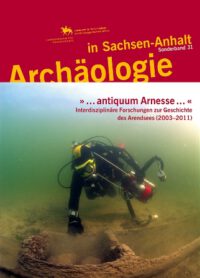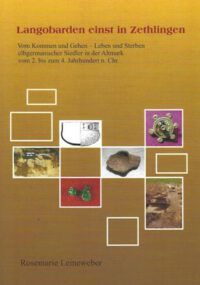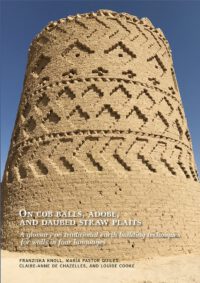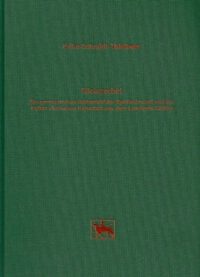Berittene Völkerschaften aus den eurasischen Weiten sind seit der Bronzezeit immer wieder nach Mitteleuropa gekommen. Sie hatten eine beachtliche Wirkung auf die ansässigen Gesellschaften und beeinflussten den Verlauf der europäischen Geschichte. Die Migration nomadischer Gruppen aus dem Osten hat systemischen Charakter, auch wenn sie meist als »Wellen« wahrgenommen wurde. Die hier versammelten Beiträge beleuchten das Phänomen aus unterschiedlichen Perspektiven und ergänzen das gängige historische Narrativ von unserem Subkontinent.
Inhaltsverzeichnis:
Vorwort der Herausgeber/Preface of the editors
Die Reiternomaden und ihre Nachbarn/Mounted nomads and their neighbours
Johannes Preiser-Kapeller
• Mounted agents of underdevelopment? An essay on the interpretation of steppe empires in current world-historical debates about the Tatar yoke, the Great Divergence, and early globalisation
Csanád Bálint
• Die Seiten eines imaginären Vierecks: Zu den Kulturkontakten zwischen Byzanz, China und den Steppenvölkern
Gergely Csiky
• Innovations in the weaponry of early medieval mounted nomads
Walter Pohl
• Forms of interaction and patterns of identification in the early medieval Eurasian steppes
Karina Grömer, Anna S. Zimmermann und Kayleigh Saunderson
• Zur Kleidung von Untersiebenbrunn und Gnadendorf. Textilforschung zum Verständnis visueller Kodierung frühmittelalterlicher Gesellschaften
Zentral- und Ostasien/Central and Eastern Asia
Nicola Di Cosmo
• Walls, trade, and mounted nomads before the Imperial Unification of China (221 BC)
Sören Stark
• Heartland of empires? Some observations on the so-called Orkhon tradition among the Türks and other Inner Asian polities
Sandra Wabnitz
• Soziale Hierarchie bei den zentralasiatischen Tuoba (4.–6. Jh. n. Chr.) – Ein Modell für andere Steppenvölker?
Britta Stein
• Reiter und Krieger im kofun-zeitlichen Japan
Vorgeschichte/Prehistory
Carola Metzner-Nebelsick
• The first evidence for mounted nomads between the Caucasus and central Europe in the early 1st millennium BC
Louis Nebelsick
• Raiders, slavers, empire builders. Some thoughts on the Vettersfelde hoard
Sarmaten, Hunnen und Awaren/Sarmatians, Huns, and Avars
Eszter Istvánovits and Valéria Kulcsár
• Sarmatians and Huns
Bence Gulyás and Anton Strokov
• Nomads and Bosporan cities in Late Antiquity (4th–7th centuries AD)
Arnold Muhl
• Boten aus der Steppe in Mitteldeutschland. Archäologische Spuren der Einflüsse von Hunnen und Awaren
Luca Traverso, Guido Alberto Gnecchi-Ruscone, Alina Naomi Hiß, Alexander Herbig, Zuzana Hofmanová, and Johannes Krause
• The origin and genetic history of the Avars
Tivadar Vida
• Neue archäologische und archäogenetische Forschungen zur awarischen Elite des 7. Jahrhunderts im Karpatenbecken
Grigori Simeonov
• Maritimes zur Awarenbelagerung Konstantinopels im Jahr 626
Adrienn Blay und Levente Samu
• Awarenzeitliche Netzwerke aufgrund archäologischer Funde vom 6. bis zum Ende des 7. Jahrhunderts
Gergely Szenthe and Erwin Gáll
• Steppe nomadic cultural phenomena in the context of a settled society – equestrian and weapon graves in the Late Avar-period Carpathian Basin (late 7th to early 9th century)
Bulgaren, Chasaren und Ungarn/Bulgarian, Khazars, and Hungarian
Sergej Ivanovich Bezuglov
• The Khazars and Byzantium in the late 7th to early 8th centuries (based on the materials of the Don barrows)
Daniel Ziemann
• Zwischen Karpaten und Kaukasus. Bulgaren vor dem Bulgarenreich
Andrey Aladzhov
• Palaces, temples, and baths. The appearance of stone buildings in the first capital of medieval Bulgaria (7th–9th century AD)
Stanislav Stanilov
• (Dis-)continuities in Bulgar archaeological culture on the Lower Danube between the 7th and 11th centuries
Evgenia Troeva
• Vorfahren und Nachkommen: Historische Rekonstruktionen und Reenactments der Protobulgaren
Donat Wehner und Gerrit Deutschländer
• Mentale und materielle Spuren der Ungarneinfälle in das Ostfrankenreich





